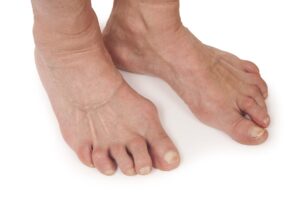
Hip Dysplasia: A Guide for Parents and Adults
Hip dysplasia (developmental dysplasia of the hip – DDH) is a condition that affects the hip joint.

You wake up in the morning and you’re dreading getting out of bed because you know, you know
those first few steps are going to be absolute agony. It started a couple of weeks ago and it was just
one side, but now it’s become significantly worse and you’ve started to compensate and now the
opposing foot is starting to hurt as well. So what have you done so far – you’ve already changed your
shoes and it got better for a little bit but now it’s back, you’ve tried some stretches but they only
work for 30 minutes or so. What do you try next?
Plantar Fasciitis is one of the most common sources of heel pain. The plantar fascia is a piece of
strong and thick tissue that runs along the bottom of the foot. It connects the heel bone to the toes,
helping to distribute the load of the body as you stride through gait. Inflammation of the plantar
fascia (most commonly at the site of attachment at the heel), is due to a biomechanical overload.
So what can you do at home before you come into the clinic:
If symptoms persist and further advice is needed, head over to our online bookings or call 9569 5145
and make an appointment with one of our team members today.

Hip dysplasia (developmental dysplasia of the hip – DDH) is a condition that affects the hip joint.

Heel pain can be a real drag, especially when that first step in the morning feels like stepping on a tack. One culprit behind this discomfort can be heel spurs. But what exactly are they, and more importantly, how can you fix them?

Arthritis in the feet can significantly disrupt your daily life, turning simple walks into painful struggles.